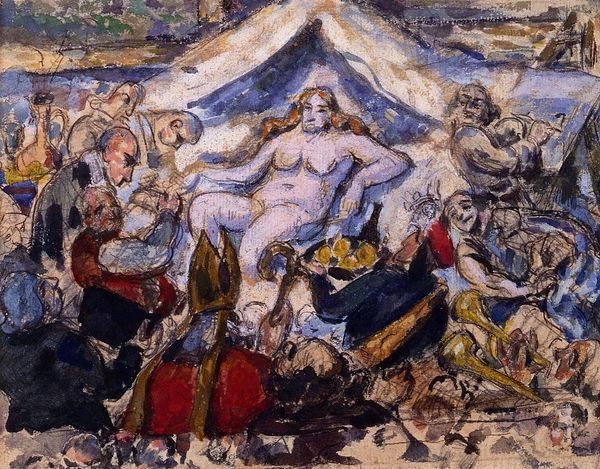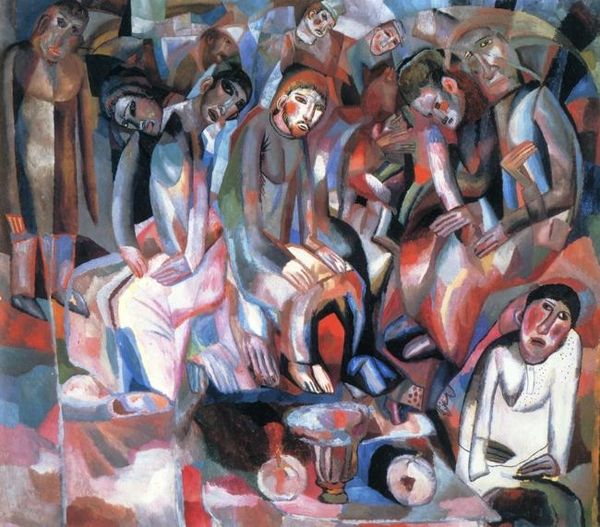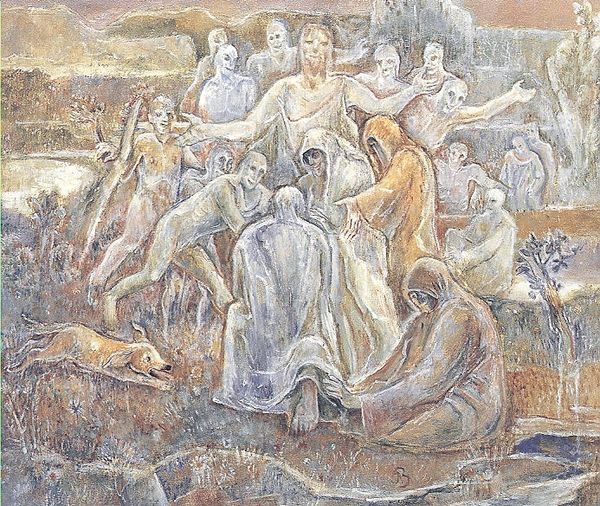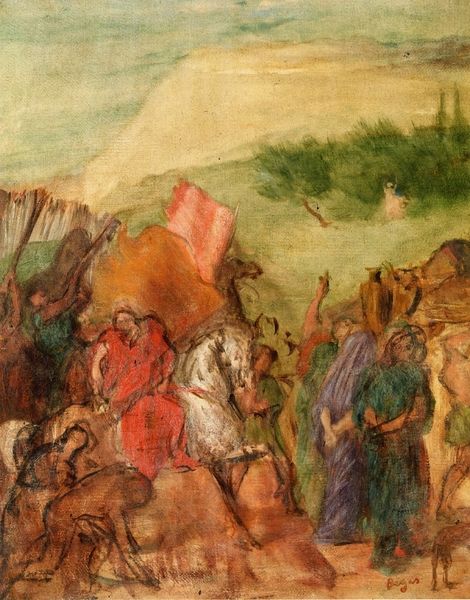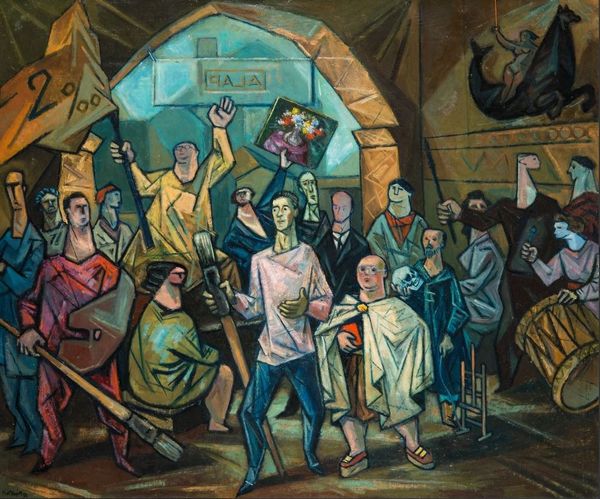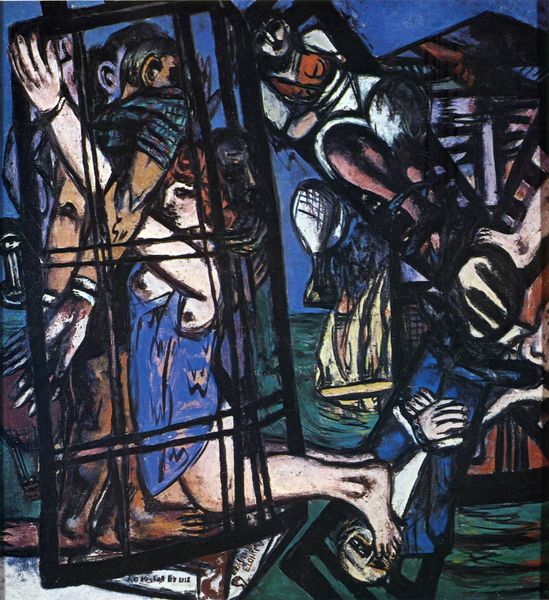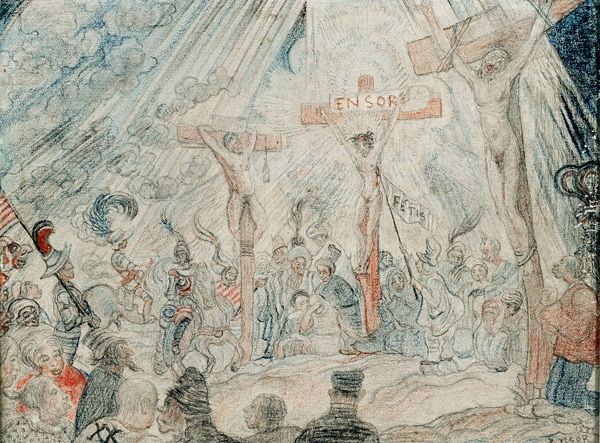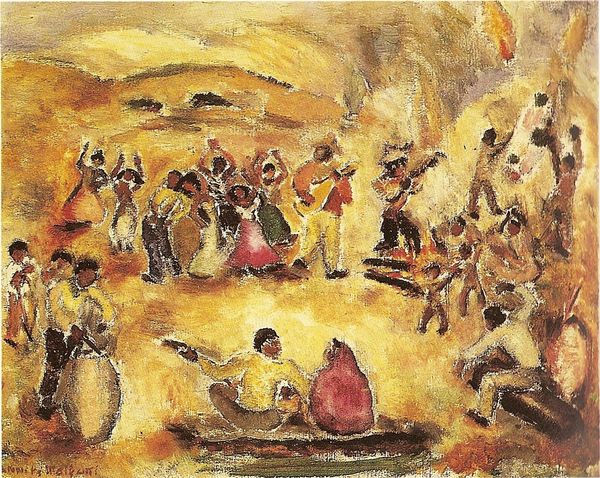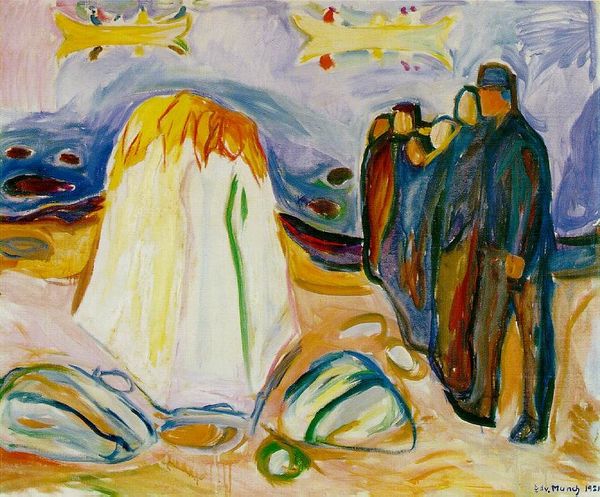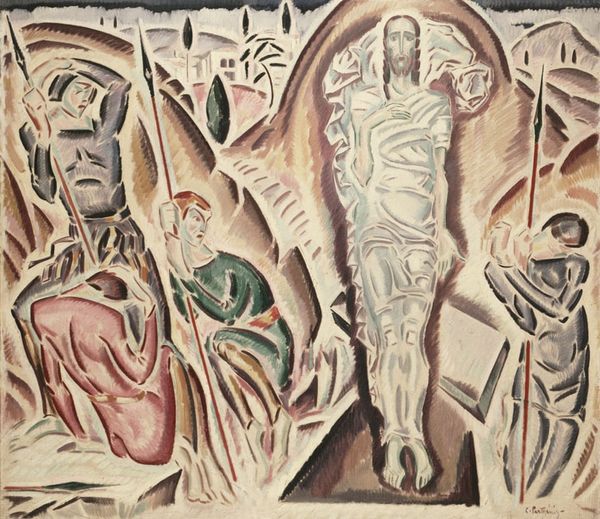
Copyright: Public Domain: Artvee
Paul Cézanne's "The Eternal Feminine," depicts a nude woman amidst a crowd, seemingly enthroned under a tent-like structure. The surrounding figures, a mix of clerics, artists, and ordinary men, each represent different facets of male perception and desire. The central nude figure, a symbol of idealized femininity, recalls Venus emerging from her shell. Consider Botticelli’s Venus and note how the motif of female divinity and allure is repackaged here, losing some of its sacred associations. Cézanne’s figure appears almost vulnerable, set against the intense gaze of the male figures. The imagery touches on collective memory, reflecting the primal, subconscious fascination with the feminine form that persists through cultural shifts and historical eras. It’s an interplay between reverence and objectification, capturing the eternal tension inherent in the male gaze and the feminine mystique. These tensions engage the viewer on a deep, subconscious level. The cyclical progression of this symbol is such that it resurfaces, evolves, and takes on new meanings in different historical contexts.
Comments
No comments
Be the first to comment and join the conversation on the ultimate creative platform.
